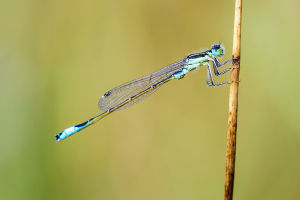Dragonfly skimming is a natural phenomenon where dragonflies lightly touch the water's surface during flight.
This graceful behavior captivates many and sparks curiosity about its causes. So, why do dragonflies engage in skimming?
From an ecological perspective, the skimming behavior of dragonflies is closely tied to their reproductive methods. The life cycle of dragonflies encompasses three stages: eggs, larvae (the aquatic stage), and adults.
Dragonfly larvae typically reside in water, while adults live in the air. Consequently, skimming is primarily related to egg-laying, ensuring a suitable environment for larval development.
When skimming, female dragonflies touch the end of their abdomen to the water's surface to deposit eggs either in the water or on plants near the water. This behavior ensures that the eggs quickly enter the water after hatching, initiating their aquatic stage.
Behaviorally, dragonfly skimming is a complex and precise pattern. Dragonflies possess excellent flying abilities, enabling them to hover, execute sharp turns, and move swiftly.
These advanced flying skills allow dragonflies to find appropriate egg-laying sites and lightly touch the water's surface with precision. Environmental factors such as water quality, flow speed, and vegetation also influence this behavior.
By skimming, dragonflies can lay eggs in suitable environments, evade predators, and enhance the survival rate of their offspring.
Biologically, dragonfly skimming is linked to their physiological structure and sensory capabilities. Dragonflies have specialized egg-laying organs at the end of their abdomen, facilitating precise egg placement.
Additionally, they possess a highly developed visual system with complex compound eyes that can detect subtle environmental changes. This allows them to accurately locate the water's surface during flight and maintain balance and stability when touching the water.
Dragonflies' sensory organs also detect temperature, humidity, and chemical composition, helping them choose optimal egg-laying sites.
Beyond these primary reasons, secondary factors also play a role in dragonfly skimming. For instance, dragonflies might use skimming to mark territory or engage in social interactions.
Research indicates that male dragonflies often touch the water during mating seasons to attract females, showcasing their health and reproductive fitness. Furthermore, skimming may be linked to their foraging strategies.
As dragonfly larvae are aquatic predators, preying on other aquatic insects and small animals, adults can enhance larvae survival and growth by laying eggs in food-rich waters.
Dragonfly skimming is not merely an elegant sight but a multifaceted behavior deeply rooted in ecological, behavioral, and biological factors. This behavior ensures that dragonflies can reproduce effectively, find suitable environments for their offspring, and adapt to various environmental conditions.
Understanding dragonfly skimming provides insight into their interaction with the environment and highlights their remarkable adaptations.


